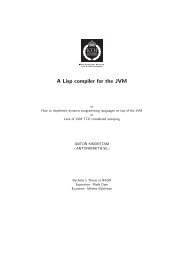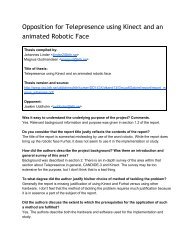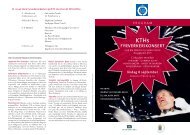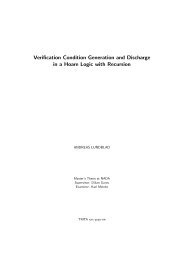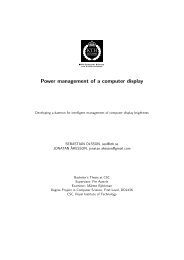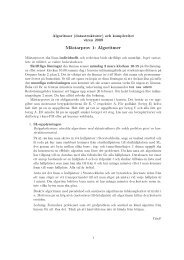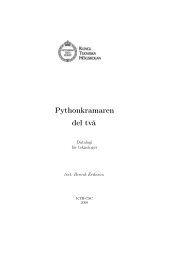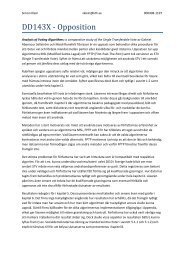Dr Faustus of Modern Physics - Department of Speech, Music and ...
Dr Faustus of Modern Physics - Department of Speech, Music and ...
Dr Faustus of Modern Physics - Department of Speech, Music and ...
You also want an ePaper? Increase the reach of your titles
YUMPU automatically turns print PDFs into web optimized ePapers that Google loves.
224 CHAPTER 52. MANY-MINDS PHYSICS<br />
• Many Observers: Many Minds: Many Perspectives: Democracy.<br />
Classical physics is based on the idea <strong>of</strong> One Mind as a unique aether or<br />
reference frame, but this idea collapsed with the Michelson-Morley experiment,<br />
<strong>and</strong> then came Einstein’s bold elimination <strong>of</strong> the aether altogether<br />
leaving an emptiness filled with “relative” space <strong>and</strong> time against a universal<br />
background <strong>of</strong> “invariant physical laws”. Einstein thus took the step from<br />
“unique” to “universal” with the magic <strong>of</strong> “universal” <strong>of</strong> being many-faceted<br />
while at the same time One, like God.<br />
Einstein gave the observer not one reference frame or coordinate system,<br />
but overwhelmed the observer with all reference frames asking the observer to<br />
coordinate observations in all frames. This is like giving a person an infinite<br />
set on eyes moving with respect to the observer <strong>and</strong> asking the observer<br />
to coordinate all the images from all the eyes. To do this Einstein asked<br />
the observer to change his concept <strong>of</strong> space <strong>and</strong> time according to certain<br />
(Lorentz) transformations required to maintain “invariance”.<br />
But Einstein’s Universal Mind was led to very strange paradoxes imbedded<br />
in the Lorentz transformations <strong>of</strong> Einstein’s special theory <strong>of</strong> relativity,<br />
<strong>and</strong> the strangeness became monumental in Einstein’s general theory <strong>of</strong> relativity<br />
with a “curved space-time” which nobody could come to grips with.<br />
In politics the idea <strong>of</strong> democracy is still strong <strong>and</strong> spreading over the<br />
world <strong>and</strong> maybe it is now for its counterpart in physics to emerge in the<br />
form <strong>of</strong> many-minds physics. In many-minds physics the idea <strong>of</strong> a unique<br />
or universal observer is ab<strong>and</strong>oned, <strong>and</strong> instead it is accepted that different<br />
observers can have different perspectives without one perspective being<br />
chosen as the “preferred one”, like a unique aether. Each observer ties his<br />
coordinate system to himself, that is each observer only observes through his<br />
own pair <strong>of</strong> eyes <strong>and</strong> does not worry about what observation he would make<br />
with eyes detached from his body.<br />
In many-minds physics the pertinent question is to what extent different<br />
observers agree on e.g. distances between different objects.<br />
52.2 The Observer <strong>of</strong> Relativity Theory<br />
The mantra in relativity is that somehow observations should be made invariant<br />
under choice <strong>of</strong> coordinate systems or observer reference frame. In<br />
Einstein’s special relativity the basic postulate is that all observers should




